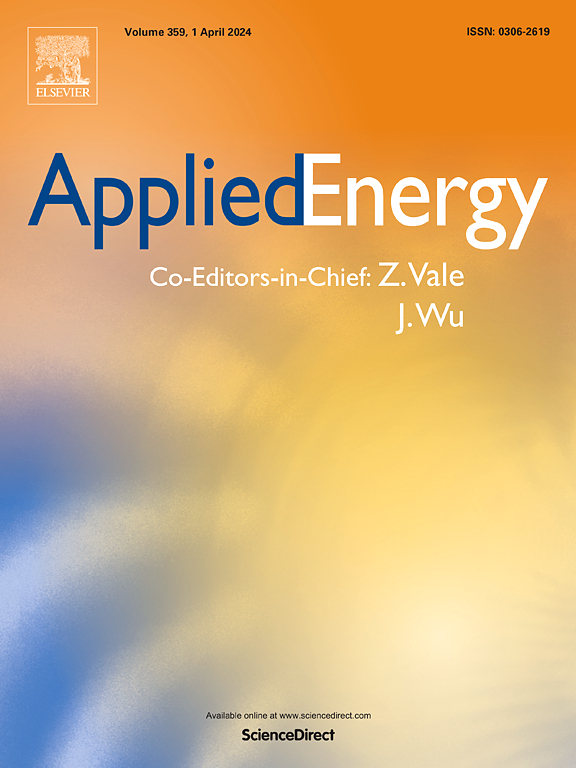Degradation analysis of dynamic voltage response characteristics of proton exchange membrane fuel cells for health evaluation under dynamic load
IF 10.1
1区 工程技术
Q1 ENERGY & FUELS
引用次数: 0
Abstract
Accurate health assessment for proton exchange membrane fuel cells (PEMFC) can facilitate early control/maintenance, thereby extending the lifespan and reducing costs. Existing health factors and online characterization of degradation mechanisms are mainly based on voltage or power. However, the dynamic voltage response under the dynamic load cycles and complex conditions poses significant challenges in assessing the degradation states. This paper provides an in-depth understanding of the degradation behavior in the dynamic voltage response. First, a dynamic voltage decomposition method is proposed, using differences in high-frequency impedance obtained from extended distribution of relaxation times (DRT) before and after load changes. Subsequently, a relative transient resistance is introduced to represent and quantify the degradation behavior of different components of the dynamic voltage response. The results show that platinum oxide and gas diffusion account for more than 80 % of the total contribution and they dominate the degradation of the dynamic response. The degradation behavior of each component is investigated in detail. Key determinants are identified and validated through a proposed semi-empirical mechanistic dynamic model (RMSE values are less than 0.0259). Furthermore, Pearson correlation between the polarizations and inductive processes is evaluated with a coefficient of 0.94. Finally, a perspective for extracting health factors considering dynamic responses is proposed. Compared to traditional voltage-based health factors, Req and Rne extracted from the negative resistance equivalent circuit exhibit stronger monotonicity over time, a higher trend-to-variance ratio, and lower time-series complexity, offering significant advantages in health assessment.
求助全文
约1分钟内获得全文
求助全文
来源期刊

Applied Energy
工程技术-工程:化工
CiteScore
21.20
自引率
10.70%
发文量
1830
审稿时长
41 days
期刊介绍:
Applied Energy serves as a platform for sharing innovations, research, development, and demonstrations in energy conversion, conservation, and sustainable energy systems. The journal covers topics such as optimal energy resource use, environmental pollutant mitigation, and energy process analysis. It welcomes original papers, review articles, technical notes, and letters to the editor. Authors are encouraged to submit manuscripts that bridge the gap between research, development, and implementation. The journal addresses a wide spectrum of topics, including fossil and renewable energy technologies, energy economics, and environmental impacts. Applied Energy also explores modeling and forecasting, conservation strategies, and the social and economic implications of energy policies, including climate change mitigation. It is complemented by the open-access journal Advances in Applied Energy.
 求助内容:
求助内容: 应助结果提醒方式:
应助结果提醒方式:


